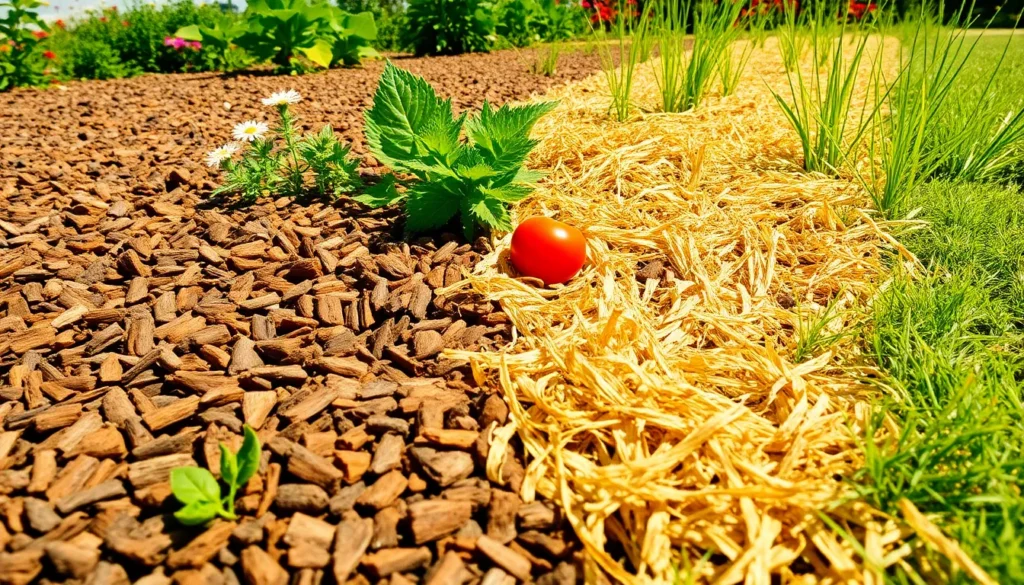Welcome to “Top 10 Mulching Techniques For Garden Beds,” where the secret to thriving plants and vibrant garden beds awaits you. Whether you’re planting your first seed or you’re a seasoned gardener with years of soil under your nails, this guide is crafted to elevate your gardening game and deepen your connection with nature.
In this collection, you’ll discover the value of mulching techniques that not only protect your plants but also enrich your soil, conserve moisture, and reduce pesky weeds. Each technique has been carefully selected to provide you with practical, easy-to-implement solutions that will transform your garden into a lush, thriving oasis.
Imagine the joy of stepping into your garden, confident in the knowledge that you’ve harnessed the power of mulching to nurture your plants to their fullest potential. With these techniques in your gardening toolkit, you’ll find yourself reaping the rewards of healthier plants and more productive garden beds, making every moment in the garden even more rewarding.
Organic Straw Mulch (Natural Soil Enrichment)
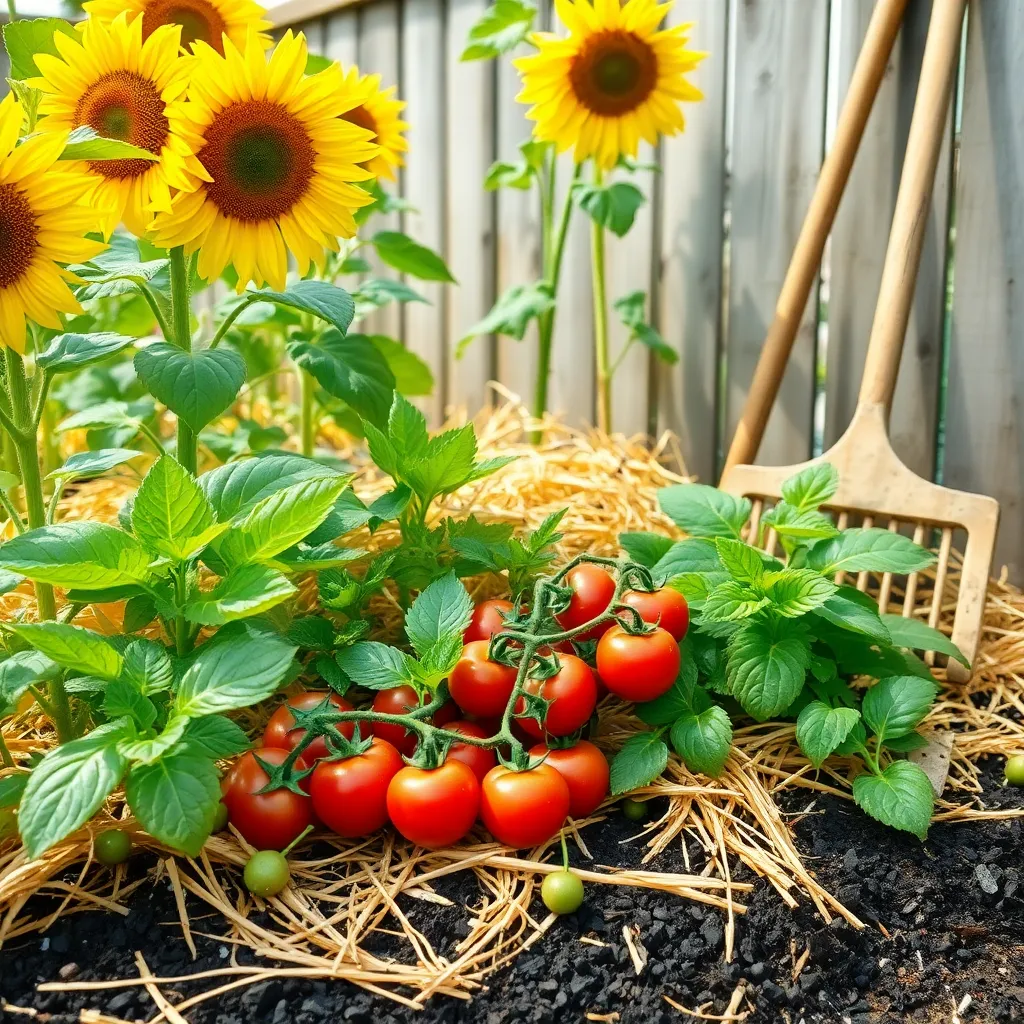
Organic straw mulch is a fantastic choice for enriching your garden soil naturally. It helps retain moisture, suppress weeds, and gradually adds nutrients as it breaks down, benefiting a wide range of plants.
Begin by applying a layer of straw mulch about two to three inches thick around your plants, ensuring that the mulch doesn’t touch the stems to prevent rot. This layer will help maintain consistent soil temperatures, which is particularly beneficial in regions with fluctuating climates.
Using straw mulch is especially advantageous for vegetable gardens, as it not only protects the soil but also improves its structure over time. As the straw decomposes, it adds organic matter to the soil, enhancing its ability to hold moisture and support healthy root development.
To maximize the benefits of straw mulch, consider pairing it with a layer of compost beneath it, which will further enrich the soil as rainwater filters through. In addition, regularly check for signs of compaction and fluff the mulch as needed to maintain good air circulation.
Wood Chip Mulch (Long-Lasting Weed Suppression)
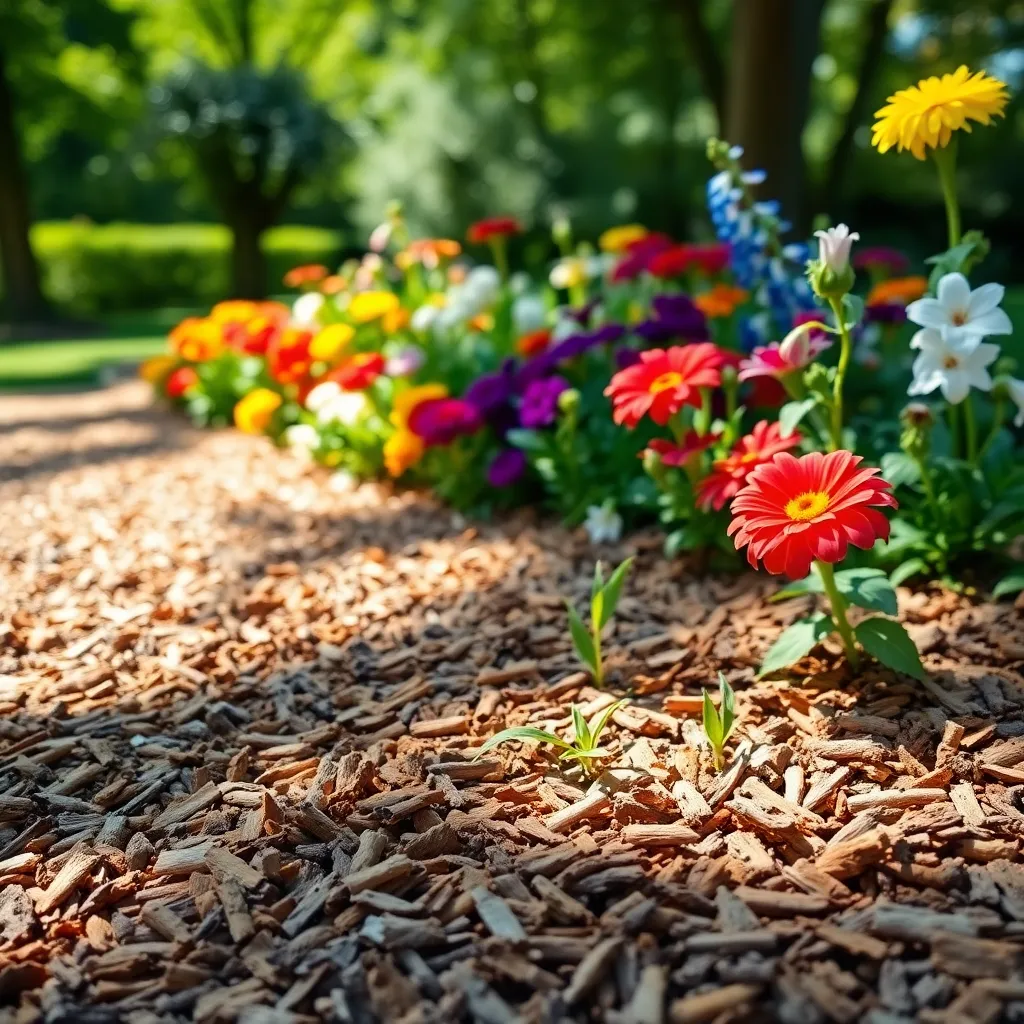
Wood chip mulch is an excellent choice for gardeners seeking long-lasting weed suppression. It not only prevents weed growth but also helps in retaining soil moisture, making it ideal for various plant types.
When applying wood chip mulch, aim for a thickness of around 2 to 4 inches to ensure effective coverage. This depth will not only suppress weeds but also regulate soil temperature, which is beneficial for plant root systems.
Opt for hardwood chips if you are looking for a longer-lasting option, as they decompose more slowly compared to softwood varieties. As the mulch breaks down over time, it enriches the soil with organic matter, improving its structure and fertility.
For best results, avoid piling the mulch directly against plant stems or tree trunks, as this can lead to moisture retention and potential disease issues. Instead, leave a small gap around the plants to promote air circulation and maintain plant health.
Pine Needle Mulch (Acid-Loving Plant Booster)
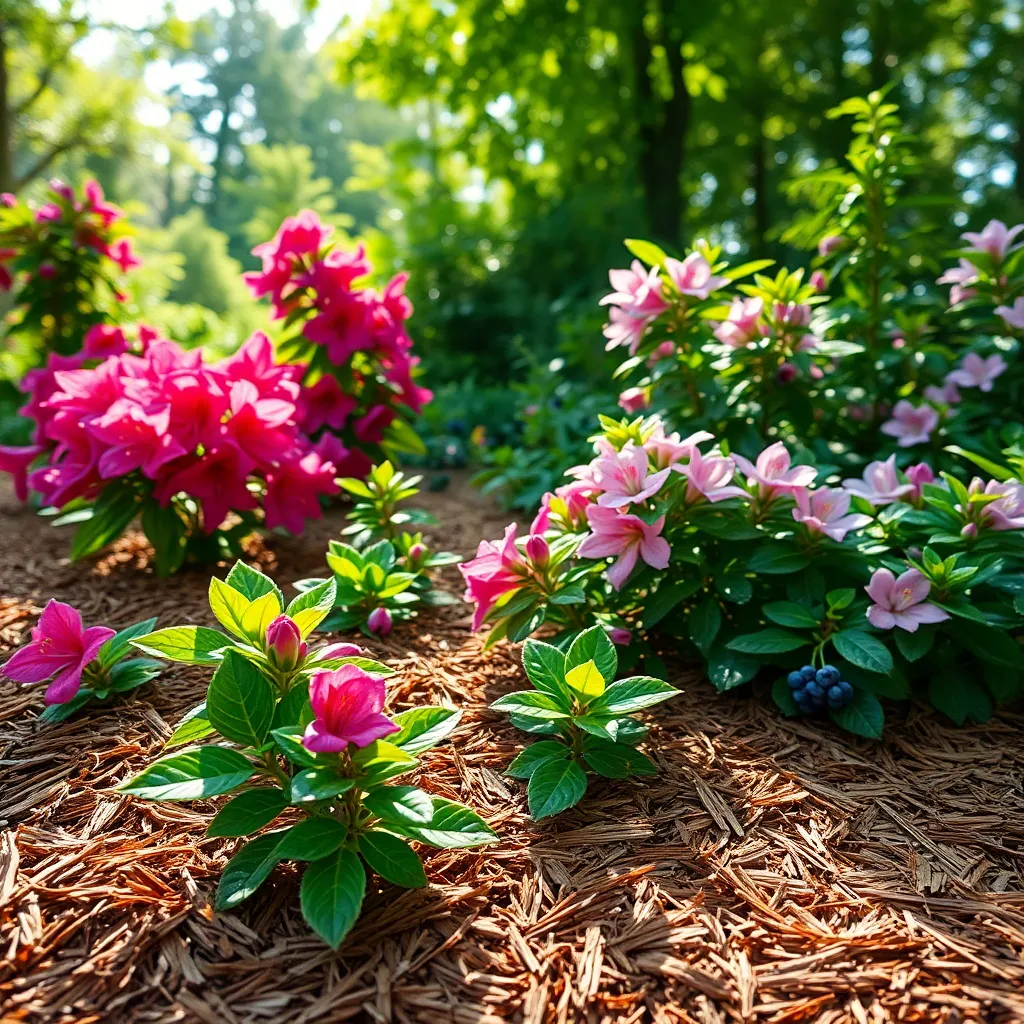
Pine needle mulch offers a natural solution for gardeners seeking to boost the health of their acid-loving plants. Known for its ability to lower soil pH, this mulch is particularly beneficial for plants like azaleas, blueberries, and rhododendrons.
Using pine needle mulch is straightforward and efficient. Simply spread a 2-3 inch layer around the base of your plants, ensuring the mulch does not directly touch the stems.
Avoid compacting the mulch to allow water and air to penetrate the soil effectively. This promotes healthy root growth and helps retain soil moisture, reducing the need for frequent watering.
For gardeners looking to improve their skills, consider collecting fallen pine needles from your yard or neighborhood for a sustainable approach. Be sure to amend your soil with organic matter if you notice signs of nutrient deficiency, as pine needles can sometimes deplete nitrogen from the soil.
Cocoa Hull Mulch (Aromatic and Decorative)
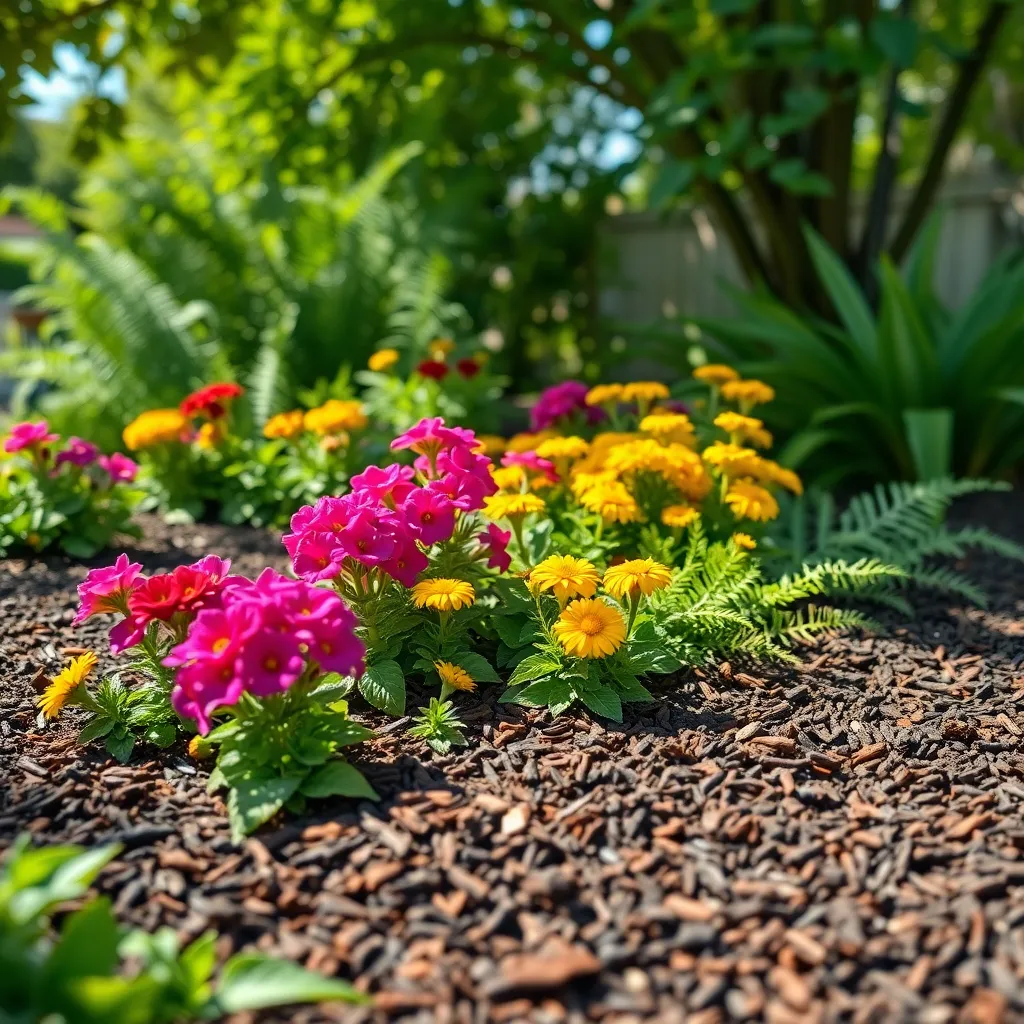
Cocoa hull mulch offers an aromatic and visually appealing option for garden beds. This mulch not only enhances soil moisture retention but also adds a sweet chocolate scent to your garden, creating a delightful sensory experience.
To apply cocoa hull mulch effectively, spread a layer about 1 to 2 inches thick over your garden beds. It’s best suited for areas with good drainage, as excessive moisture can lead to mold growth in the mulch.
Gardeners will appreciate that cocoa hull mulch decomposes over time, enriching the soil with nutrients. As the mulch breaks down, it improves soil structure, making it easier for roots to penetrate and plants to thrive.
Remember to keep cocoa hull mulch away from pets as it can be toxic if ingested. For those looking for a decorative and practical mulching solution, cocoa hulls provide both aesthetic appeal and functional benefits, making them a great choice for many garden settings.
Grass Clippings (Cost-Effective Nutrient Provider)
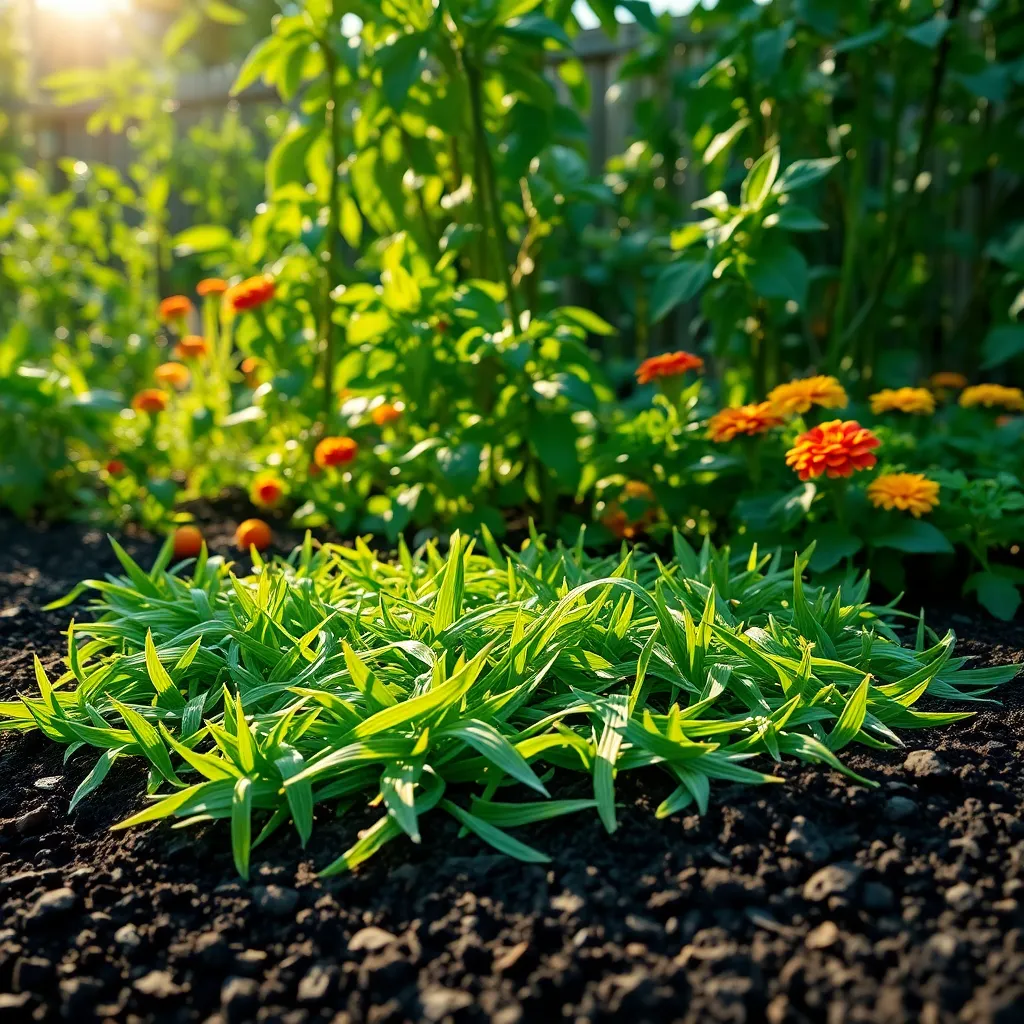
Grass clippings serve as a cost-effective and nutrient-rich mulch for garden beds. They decompose quickly, releasing nitrogen and other essential nutrients back into the soil, promoting healthy plant growth.
To use grass clippings effectively, apply a thin layer, about 1 to 2 inches thick, ensuring they are dry to prevent matting and mold. Frequent mowing can provide a steady supply of clippings, making it a sustainable option for those looking to maintain a healthy garden without additional costs.
For best results, avoid using clippings from lawns treated with herbicides or pesticides, as these chemicals can harm your garden plants. Instead, source clippings from untreated areas or use your own lawn if it’s chemical-free, ensuring a safe and organic mulch option.
Advanced gardeners can experiment with mixing grass clippings with other organic materials, such as shredded leaves or straw, to enhance the mulch’s effectiveness. This combination can help improve soil structure and moisture retention, benefiting a variety of plants in different soil types.
Bark Mulch (Aesthetic Landscape Enhancer)
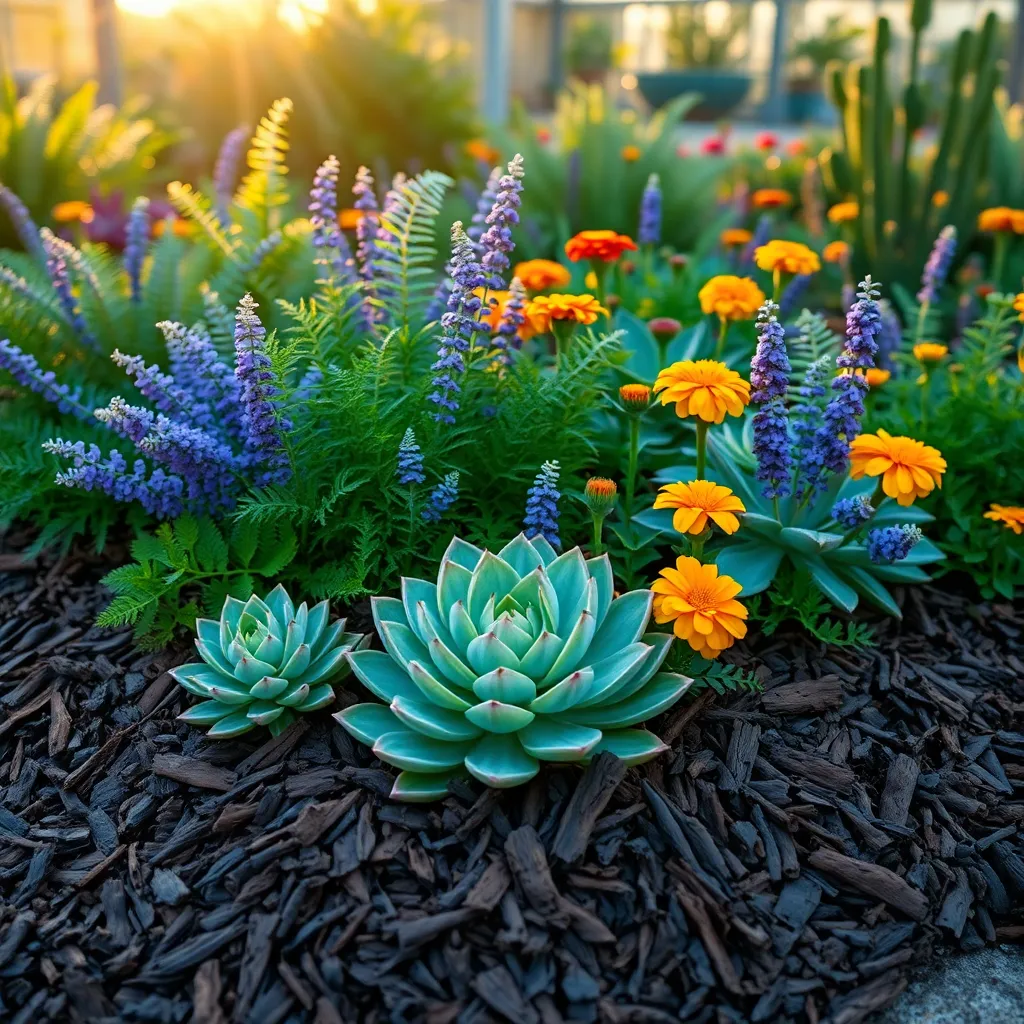
Bark mulch is an excellent choice for gardeners looking to enhance the aesthetic appeal of their landscape while simultaneously benefiting their plants. It is particularly effective in suppressing weeds and retaining soil moisture, making it a practical choice for both novice and seasoned gardeners.
For optimal results, apply a layer of bark mulch that is about 2 to 4 inches thick around your plants. This thickness helps to ensure that sunlight is blocked from reaching weed seeds, thereby preventing their growth, and it also conserves moisture by reducing evaporation.
When selecting bark mulch, consider the variety of barks available, such as pine, cedar, and cypress, each offering unique colors and textures. Cedar and cypress bark are known for their natural insect-repelling properties, which can be advantageous in areas prone to pest issues.
Advanced gardeners might choose to combine bark mulch with other organic materials like compost or leaf mold to further enrich the soil. This combination not only improves soil structure over time but also enhances the nutrient content available to plants, fostering healthier growth. Ensure the soil beneath the mulch remains well-draining, as excessive moisture can lead to root rot in some plant species.
Leaf Mold Mulch (Microbe-Rich Soil Conditioner)
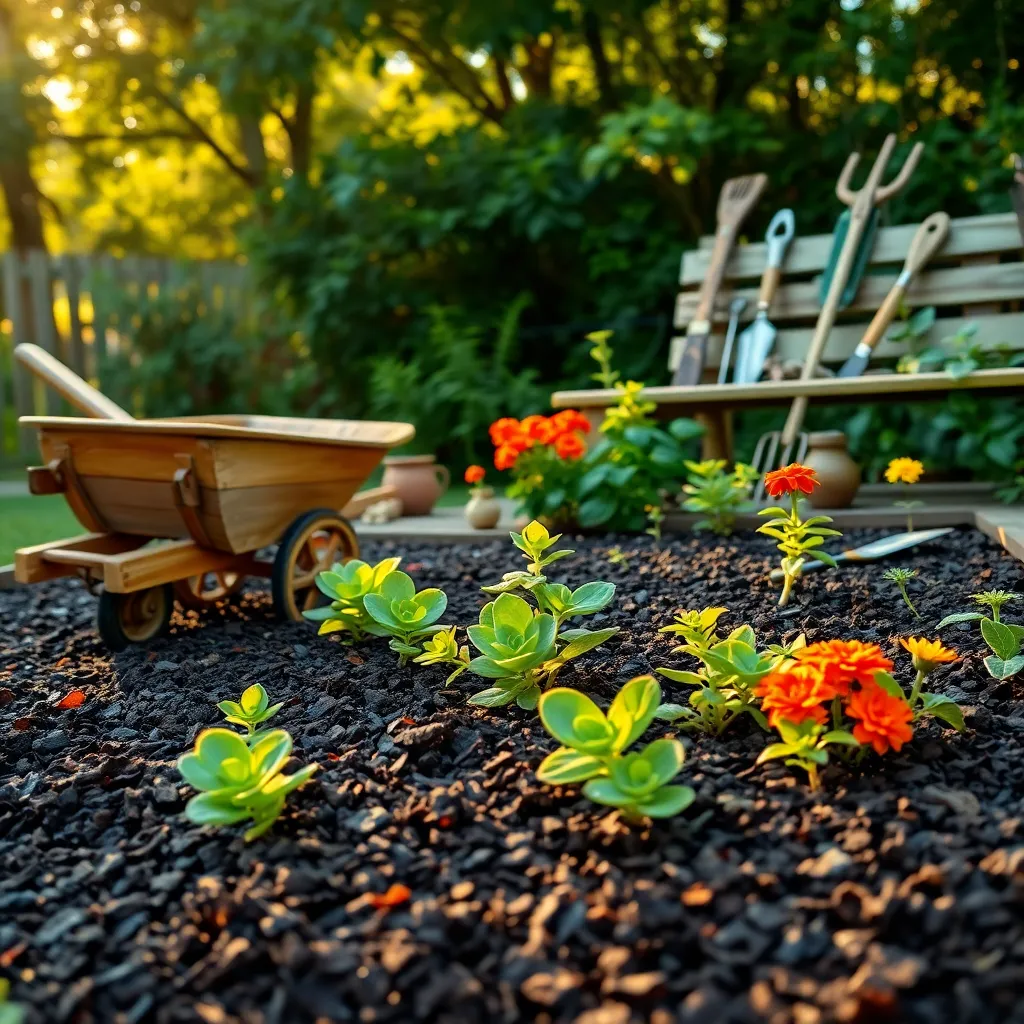
Leaf mold mulch is a fantastic, microbe-rich soil conditioner that can significantly enhance your garden’s health. This mulch is simply decomposed leaves, making it an excellent way to recycle garden waste and improve soil structure.
To create leaf mold, start by gathering fallen leaves in a pile or within a wire cage, ensuring they remain moist. Over time, fungi will break down the leaves into a dark, crumbly substance that is rich in microbial life, perfect for enriching your soil.
Applying leaf mold as mulch helps retain soil moisture and moderates soil temperature, creating an ideal environment for plant roots. Place a layer of leaf mold around plants, ensuring it doesn’t touch the stems to prevent rot, and enjoy the benefits of this natural soil conditioner throughout the growing season.
For an advanced gardening tip, use leaf mold to improve soil aeration and drainage in heavy clay soils. Mix it into the top few inches of soil to enhance its texture, making it easier for roots to penetrate and access nutrients.
Compost Mulch (Nutrient-Dense Soil Amendment)

Transforming kitchen scraps and yard waste into compost mulch is an excellent way to enrich your garden beds with nutrients. This nutrient-dense soil amendment not only improves soil structure but also enhances moisture retention, making it perfect for both beginner and seasoned gardeners.
To create compost mulch, start by collecting organic materials like fruit peels, vegetable scraps, and grass clippings. Layer these materials in a compost bin, ensuring a balance between green materials (rich in nitrogen) and brown materials (rich in carbon) to promote efficient decomposition.
Regularly turning your compost pile is crucial to accelerate the breakdown process and prevent any foul odors. Aim to turn the compost every two weeks, keeping the pile moist but not soggy, to maintain optimal conditions for microbial activity.
Once your compost is ready, spread a 2-3 inch layer over your garden beds, avoiding direct contact with plant stems to prevent rot. This practice not only provides plants with a slow-release fertilizer but also suppresses weeds, reducing the need for chemical herbicides.
Gravel Mulch (Heat Retention for Mediterranean Plants)

Gravel mulch is an excellent choice for gardeners looking to retain heat for their Mediterranean plants. By covering the soil with a layer of gravel, you can significantly help in maintaining the warmth that these sun-loving plants crave.
To apply gravel mulch effectively, start by ensuring that your plant beds have well-draining soil. Mediterranean plants, such as lavender and rosemary, thrive in environments where excess moisture doesn’t linger.
Choose a gravel type that complements your garden’s aesthetic, while ensuring it is small and uniform enough to create a consistent layer. A layer about 2 to 3 inches thick will be adequate for insulation and will help in reducing the frequency of watering, as it minimizes evaporation.
For an advanced approach, consider using different gravel colors to enhance the visual appeal of your garden. Not only does this add an attractive element, but it can also be used strategically to reflect or absorb heat, depending on the plant’s needs.
Plastic Sheeting Mulch (Effective Moisture Retention)

One effective way to retain moisture in your garden beds is through the use of plastic sheeting mulch. This method is particularly beneficial in areas with high evaporation rates, as it helps keep the soil consistently moist, reducing the need for frequent watering.
Plastic sheeting mulch works well for a variety of plants, especially those that thrive in warm conditions, such as tomatoes, peppers, and melons. By covering the soil, it prevents weed growth, allowing your plants to receive the maximum nutrients and water available without competition.
To apply plastic sheeting mulch, start by preparing your garden bed, ensuring the soil is well-drained and free of debris. Lay the plastic sheeting over the soil surface, cutting holes for your plants to grow through, and secure the edges with soil or landscape staples to prevent it from blowing away.
For best results, choose black or dark-colored plastic, as these colors help warm the soil more effectively, promoting faster plant growth. However, be cautious in extremely hot climates, as the increased heat can sometimes stress plants; in such cases, consider using a lighter-colored plastic to reflect more sunlight.
Conclusion: Growing Success with These Plants
As we’ve explored, the top 10 mulching techniques for garden beds include embracing variety with organic mulch, leveraging the durability of inorganic options, and understanding your climate’s demands, among other essential methods. Each technique serves as a metaphor for cultivating thriving relationships: nurturing diversity, sustaining through challenges, and adapting to environments are key to flourishing bonds. To see this in action, why not choose one of these techniques to implement in your garden today? This small, tangible step will not only enhance your garden but also deepen your appreciation for the care and patience relationships require.
Feel inspired to revisit these insights? Bookmark this article to keep these valuable strategies at your fingertips. As you apply these principles, you’ll find that the seeds of your effort will blossom into enduring connections, enriching your life and the lives of those around you. Remember, just as a well-mulched garden grows strong and vibrant, your relationships can thrive with the right care and attention. Here’s to a future filled with blooming gardens and flourishing relationships!

